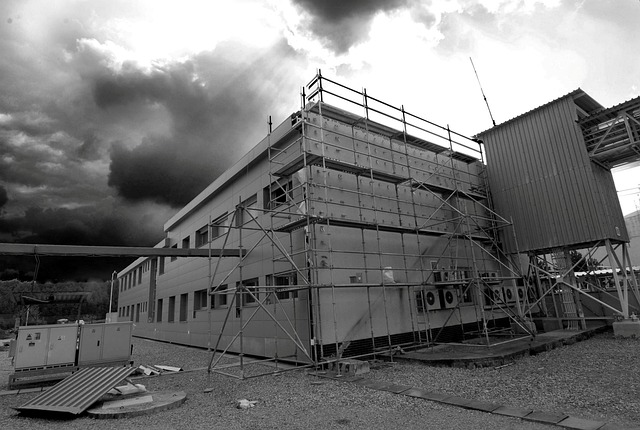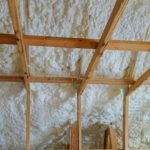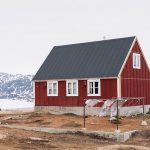
Choosing the Right Insulation System for Your Building
In the intricate dance of constructing an energy-efficient and sustainable building, the choice of insulation becomes a choreography of key decisions. From the type of insulation material to considerations of climate and energy efficiency, every step in this process plays a vital role in the building’s overall performance.
This exploration aims to guide you through the nuances of selecting the right insulation system, ensuring not only optimal energy efficiency but also a comfortable and environmentally responsible living or working space.
Table of Content
- 1 Understanding Insulation Basics
- 2 Assessing Building Needs
- 3 Types of Insulation Systems
- 4 R-Value and Energy Efficiency
- 5 Environmental Considerations
- 6 Installation Considerations
- 7 Cost-Benefit Analysis
- 8 Case Studies: Successful Insulation Implementations
- 9 Future Trends in Insulation Technology
- 10 Maintenance and Upkeep
- 11 Hiring Quick Therm
- 12 Conclusion
Understanding Insulation Basics
Insulation, in its essence, acts as a thermal barrier, regulating temperature by preventing the transfer of heat between the interior and exterior of a building. This essential function is achieved through a variety of insulation materials, each with its unique properties. From traditional blanket insulation like batts and rolls to cutting-edge spray foam and reflective insulation, the market offers options to suit different needs and structures.
Assessing Building Needs
Before delving into insulation options, it’s crucial to conduct a thorough assessment of the building’s requirements. Climate considerations play a pivotal role; insulation tailored to local weather patterns ensures efficiency in both heating and cooling. The size and structure of the building are equally important, with customized solutions needed for various architectural designs. Identifying specific areas of energy loss or gain guides the choice of insulation types for maximum effectiveness.
Types of Insulation Systems
- Blanket (Batts and Rolls): This cost-effective and versatile option is well-suited for standard applications, providing a barrier against heat transfer.
- Spray Foam: Ideal for hard-to-reach spaces and irregular structures, spray foam insulation expands to create a seamless thermal seal.
- Loose-Fill: Perfect for attics and areas with irregular shapes, loose-fill insulation conforms to spaces, providing effective coverage.
- Rigid Foam: With a high R-value and moisture resistance, rigid foam insulation is a durable choice, often used in walls and roofs.
- Reflective Insulation: This type reduces radiant heat transfer, making it effective in spaces where this form of heat exchange is prevalent.
R-Value and Energy Efficiency
The measure of a material’s thermal resistance, known as its R-value, is a critical factor in selecting insulation. Understanding the correlation between R-value and energy efficiency is essential. Different regions have varying energy efficiency standards, and matching the insulation’s R-value to these standards ensures optimal performance. Striking a balance between upfront costs and long-term energy savings is key to a successful insulation strategy.
Environmental Considerations
In an era increasingly defined by environmental awareness, the sustainability of insulation materials has become a prominent consideration. Opting for eco-friendly materials and prioritizing recyclability minimizes the carbon footprint of a building. This commitment to sustainability aligns with broader environmental goals, making environmentally responsible insulation choices a cornerstone of modern construction practices.
Installation Considerations
The effectiveness of insulation is not solely dependent on the material but also on the quality of installation. Choosing between DIY installation and professional services is a decision that should weigh the complexity of the project and the expertise required. Proper installation techniques, especially for materials like spray foam, ensure an airtight seal, maximizing insulation efficiency and preventing energy loss.
Cost-Benefit Analysis
While upfront costs often influence decisions, a comprehensive cost-benefit analysis reveals the true value of insulation choices. Considering the reduced need for maintenance, energy savings, and potential government incentives for energy-efficient options provides a more accurate picture of the long-term investment. A well-insulated building not only reduces energy bills but also contributes to a more sustainable and comfortable living or working environment.
Case Studies: Successful Insulation Implementations
Real-world success stories serve as beacons, illuminating the transformative impact of strategic insulation choices. Buildings, both residential and commercial, have experienced substantial energy savings and improved comfort after insulation upgrades. These case studies not only highlight the effectiveness of specific insulation systems but also provide valuable insights into the tangible benefits of prioritizing energy efficiency.
Future Trends in Insulation Technology
The landscape of insulation technology is continually evolving. Innovations in materials and smart insulation systems are shaping the future of construction. From sustainable materials to technologies that integrate with building automation systems, staying abreast of these trends ensures that your insulation choices remain at the forefront of efficiency and sustainability.
Maintenance and Upkeep
Ensuring the longevity and continued effectiveness of insulation requires proactive maintenance. Regular inspections for signs of wear and tear, prompt repairs, and collaborations with professional insulation maintenance services are integral to preserving optimal performance. Well-maintained insulation not only extends its lifespan but also guarantees consistent energy efficiency.
Hiring Quick Therm
For those seeking personalized guidance on choosing the right insulation system tailored to their specific needs, hiring Quick Therm is a wise step. Quick Therm’s experts offer comprehensive insights, combining industry knowledge with a commitment to sustainable and efficient building practices. Their guidance ensures that your insulation choices align with your goals for comfort, energy efficiency, and environmental responsibility. Contact Quick Therm for more information and embark on a journey toward a well-insulated and sustainable building.
Conclusion
In the grand tapestry of constructing a building, the thread of insulation weaves a story of efficiency, comfort, and environmental responsibility. Choosing the right insulation system involves a careful dance between various factors, from climate considerations to the types of materials used. By understanding the basics, assessing building needs, and staying informed about the latest trends, you pave the way for a building that stands not only as a testament to your choices but also as a sustainable and energy-efficient space for years to come.


